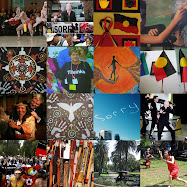
To me, South Bank is a symbol of the determination and occasional success of people in stopping rapacious developers getting their hands on public space.
This part of Brisbane's riverbank was originally a meeting place for the traditional landowners, the Turrbal and Yuggera people and, in the early 1840s it became the central focus point of early European settlement. From the 1850s, South Bank Precinct was established as the business centre of Brisbane, until 1893, when floods forced the central business district to higher ground on the northern side of the river. The southern area became home to vaudeville theatres, derelict boarding houses, and light and heavy industry.
In the 1970s parkland was reclaimed along the river bank, and the Queensland Cultural Centre was built, including the Queensland Art Gallery, the Queensland Museum, the Queensland Performing Arts Centre and State Library of Queensland.
In 1988, Brisbane held World Expo 88, following which government, under corrupt and autocratic Premier Joh Bjelke-Peterson, intended to develop the site for commercial interests. However, a public campaign successfully lobbied for the site to be redeveloped as parkland for the enjoyment of people in Brisbane. In 1989 the South Bank Corporation, a Queensland Government statutory body, was established to oversee the development and management of the South Bank Parklands.
However, the struggle continues as proposals by the Corporation emerged in 2003 to sell large portions of South Bank Parkland to developers. That was overcome. The group Save Our South Bank Parkland continues its vigilance.
Already apartments exceed height limits.


Below:Part of South Bank from Rydge's Hotel, looking downstream. In the foreground is the artificial beach.





Interesting photos.
ReplyDeleteThere's already so little of the parkland left and the developers still want it? Honestly!
ReplyDeleteAside from the environmental aspect, don't they realize that land values might actually go down if they eat up all the parks? In the end, more green (and blue) spaces work to their best interests too.